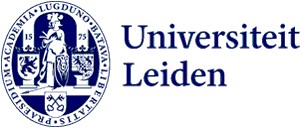
As old as the road to Rome: 'Fake news was already to be found in ancient times'
Fake news a new phenomenon? Not according to Rens Tacoma and Indira Huliselan. In an NWO project, the associate professor and PhD student will delve into the twisting, scheming and tampering with facts that went on thousands of years ago.
'It’s not completely the same, but we think there was a historical equivalent of fake news in ancient times,' Tacoma says. 'There are quite a few documents known from the Roman Empire that are false or appear to have been tampered with. Previously, researchers were often quick to dismiss these because they were not thought to be “real”. We think that these these documentary fictions can provide insight into how society functioned at that time.'
A lot of tampering can be found in letters from the emperor to local communities or individuals. 'These were so important to the recipients that they were engraved in stone. These tablets showed that they had received privileges, but also that they had a line of communication with the emperor,' Tacoma explains.

Claiming position
It was precisely this high value of the texts that made it tempting to change a word or add an outright lie. This probably happened frequently at the time of the first Christian Emperor Constantine the Great. 'Until then, Christians had little standing, but the recognition Constantine gave the religion changed their status dramatically,' Huliselan says. 'However, that didn’t mean that the rest of the people accepted it immediately.'
It led to a battle between Christians and other social groups, with documents being brandished vigorously. You see that Christians started writing themselves into history to defend themselves on the one hand and, on the other hand, to put their opponents on trial,,' Huliselan explains. Her task is to spend the next few years mapping out exactly how the Christians tried to claim and secure their position.

Breadth and depth
To do that, Indira is going to drill very deeply into one specific case,' Tacoma explains. 'I myself am going to try to map precisely how these kinds of documents may have functioned throughout the Roman world during the period of the Roman Empire. This will give us both a global and detailed picture.' In time, another postdoctoral fellow will study how manipulated documents are handled in ancient literature.
Their aim is not to clarify once and for all what is true. Tacoma and Huliselan mainly want to show whether and how documentary fictions have functioned over the centuries and how this relates to modern day fake news. 'Some elements are very obviously new, such as the speed at which disinformation spreads today,' Tacoma says. 'At the same time, by applying new theories about fake news to antiquity, we can also show that a similar phenomenon occurred then.'
In-demand topic
And there appears to be a need for this. 'I really like the fact that this project grew out of the research traineeship I started with Peter Burger’, Tacoma explains. Indira played a star role in this. ‘When we first started on a small scale, we saw that the subject was really catching on, and the need for historical contextualizationat has only increased.
Huliselan adds: ‘During that traineeship we were already invited to talk at conferences but now we’re going to make a podcast with the National Museum of Antiquities, where the theme this year is ‘Really fake?’ Tacoma: ‘As an ancient historian, it can sometimes be difficult to relate research to societal themes, but in this case it’s almost the other way around.’

